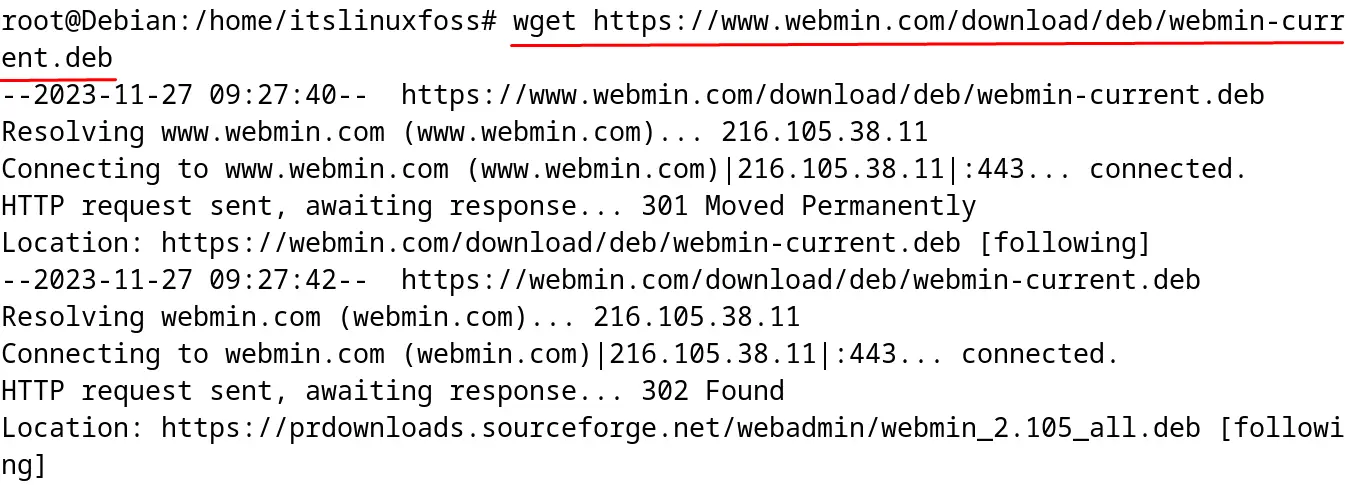Webmin is a graphical user interface application for managing the administrative tasks of UNIX-based operating systems. This provides ease to monitor and manage the services running on the computer.
Users can create and delete user accounts using the Webmin applications. Also, the services including Apache2 and package management can be done using Webmin. Also, Users can monitor the computer hardware information such as the memory utilization using it.
Webmin is also available for Windows along with the UNIX-based operating systems. This post will explain the installation of the Webmin on Debian Linux with the following outline:
- What are the Installation Methods of Webmin on Debian
- Method 1: Install Webmin on Debian by Adding its Repository
- Method 2: Install Webmin on Debian Using the deb package
- How to Configure Webmin on Debian
- How to Use Webmin on Debian
- How to Uninstall Webmin on Debian
Let’s start the article with the installation method of Webmin on Debian.
What are the Installation Methods of Webmin on Debian?
Two different approaches can be used to install Webmin on Debian 12:
- By adding the repository of Webmin
- By downloading the Debian Package of Webmin
Method 1: Install Webmin on Debian by Adding its Repository
To install the Webmin on Debian 12, download the repository with its GPG key from its official website. Add it to the repository and install Webmin after updating the packages.
All this is explained in the step-by-step installation guide mentioned below.
Step 1: Open the Terminal
The first step is to launch the terminal as shown below:

Step 2: Switch to the Root User
It is recommended to install the Webmin by switching to the root user with the command:
$ sudo -s

Step 3: Open the sources.list File
Now open the sources.list file using the nano text editor:
# nano /etc/apt/sources.list

Step 4: Add the Repository to the sources.list File
Now add the repository of Webmin in the opened file by copying and pasting the below-mentioned lines at the end of the file:
# deb [signed-by=/usr/share/keyrings/jcameron-key.gpg] https://download.webmin.com/download/repository sarge contrib

Save the file by using the CTRL+S and then close it with the CTRL+X.
Step 5: Add the Webmin’s GPG Key
Now add the GPG key of the Webmin by running the command:
# wget https://download.webmin.com/jcameron-key.asc
cat jcameron-key.asc | gpg --dearmor >/usr/share/keyrings/jcameron-key.gpg

Step 6: Update the Packages
After adding the repository and GPG key of the Webmin, update the packages of Debian 12:
# apt update

Step 7: Install the Webmin on Debian 12
It is the time to use the “install” option of the apt command to install Webmin on Debian 12:
# apt install webmin -y

Webmin has been installed successfully on Debian 12.
Method 2: Install Webmin on Debian Using the deb package
Webmin can also be installed on Debian 12 by downloading its debian package from its official website by using the wget command:
# wget https://www.webmin.com/download/deb/webmin-current.deb

When the downloading is completed, confirm it by listing down the contents:
# ls

Now install the Webmin on Debian 12 by running the following command:
# apt install --install-recommends ./webmin-current.deb -y

The package of Webmin has been installed successfully.
How to Configure Webmin on Debian?
For configuring the Webmin on Debian after the installation, follow the steps below.
Step 1: Allow Port 10000
Webmin uses port 10000 for its communication. To allow this port, first enable the ufw and then allow port 10000 with the command:
# ufw enable && ufw allow 10000

Step 2: Start the Webmin Service
After enabling the port 10000, use the systemctl command to start the Webmin service:
# systemctl start webmin

To confirm the execution of the above command, display the status of the Webmin service:
# systemctl status webmin

Webmin is running successfully on Debian 12.
How to Use Webmin on Debian?
To use Webmin on Debian 12, open the web browser on the computer and go to the following URL:
localhost:10000

Now enter the username and password to use the Webmin application:

A dashboard of Webmin is displayed on the screen after the successful login:

Now by scrolling down the menu on the left side, users can manage the system using Webmin. For example, to update the system, “Software Update Packages” and update the packages:

This way users can use Webmin for managing and monitoring the system on Debian 12.
How to Uninstall Webmin on Debian?
For the uninstallation of the Webmin on Debian, use the purge option of the apt command to delete all the configuration files as well:
# apt purge webmin -y

Also to remove the unused dependencies of Webmin, execute the command:
# apt autoremove webmin -y

Finally, exit the root terminal with the execution of the command:
# exit

This is all about the installation of Webmin on Debian
Conclusion
To install the Webmin on Debian 12, download the repository with its GPG key or download its Debian package, once done, run the “apt install webmin -y” command in the root user terminal. This blog has explained the installation of Webmin by both methods with its basic configuration. Also, the basic usage of Webmin has been explained in this blog with the method to uninstall it on Debian 12.
